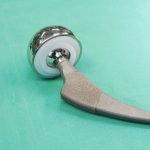Weighted vests offer a unique form of deep pressure stimulation, providing comfort and focus for children with autism. As sensory sensitivities can impact daily life, understanding how these vests work can be transformative. They not only promote relaxation but also support improved concentration and self-regulation. By exploring practical applications and individual experiences, we can unlock their full potential and encourage positive development. The benefits are profound for both children and caregivers alike.
Understanding Weighted Vests
Weighted vests are therapeutic tools designed to provide deep pressure stimulation, often used in occupational therapy. They are essentially vests with evenly distributed weights, tailored to offer a calming effect. The primary purpose of these vests is to aid in sensory integration, particularly for individuals who experience sensory processing challenges.
Also read : Exploring the Impact of Sandplay Therapy on Childhood Anxiety Disorders: A Comprehensive Analysis
How Weighted Vests Are Used in Therapy
In therapeutic settings, weighted vests are employed to help individuals, especially children, achieve a sense of calm and focus. The gentle pressure from the vest can simulate a comforting hug, which is beneficial for those with sensory sensitivity. This makes them a valuable tool for therapists working with children who have autism or ADHD, as they can improve attention and decrease anxiety.
The Role of Sensory Integration
Sensory integration is crucial for children with autism as it helps them process and respond to sensory information more effectively. Weighted vests contribute to this by providing proprioceptive input, which is the body's ability to sense movement, action, and location. This input can help children with autism better understand their body's position in space, leading to improved motor skills and reduced sensory overload.
Also to see : Discover orthopedic sandals designed for your foot health
Mechanism of Deep Pressure Stimulation
Deep pressure stimulation is a therapeutic technique that applies firm, consistent pressure to the body. This method is known for its calming effects, particularly beneficial for individuals with sensory processing disorders. The pressure activates the parasympathetic nervous system, which promotes relaxation and reduces stress levels.
Physiological Effects of Deep Pressure Stimulation
When deep pressure is applied, it can release serotonin and dopamine, neurotransmitters associated with happiness and well-being. This biochemical response helps in managing anxiety and enhancing focus. For individuals with sensory processing challenges, such as those with autism or ADHD, these calming effects can be significant.
Connection to Sensory Processing Disorders
Sensory processing disorders can make everyday stimuli overwhelming. Deep pressure stimulation can mitigate these effects by providing a predictable sensory input that helps the brain organize and respond to sensory information more effectively. This organized input can lead to improved attention and reduced anxiety, allowing individuals to engage more fully in daily activities.
Benefits in Therapy
In therapeutic settings, deep pressure stimulation is an invaluable tool. It offers a non-invasive way to support individuals, helping them achieve a sense of calm and focus. This makes it a preferred choice for therapists working with children who benefit from structured sensory input.
Therapeutic Benefits of Weighted Vests for Children with Autism
Weighted vests have become an integral part of autism therapy, offering a range of benefits that are supported by evidence-based research. These vests are particularly effective in enhancing focus and comfort for children with autism, allowing them to engage more fully in daily activities.
Evidence-Based Therapeutic Effects
Studies have shown that the benefits of weighted vests are significant in therapeutic settings. The consistent pressure exerted by the vest can lead to noticeable improvements in a child's ability to concentrate and remain calm. This pressure helps in reducing anxiety and enhancing sensory processing, which is crucial for children with autism.
Comfort and Focus in Daily Activities
Children using weighted vests often report feeling more at ease during everyday tasks. The vest's pressure provides a soothing effect that can make challenging situations more manageable. This improved comfort translates into better focus and participation in activities, both at school and home.
Long-Term Benefits
Long-term use of weighted vests has been linked to sustained improvements in sensory processing and behaviour. Over time, children may experience enhanced ability to regulate emotions and maintain focus, contributing to overall development and well-being. The benefits of weighted vests extend beyond immediate relief, offering a promising tool for ongoing autism therapy.
Practical Tips for Using Weighted Vests
When considering how to use weighted vests effectively, selecting the right vest is crucial. Choose a vest that distributes weight evenly and is adjustable to fit the child's size. The weight should typically be 5-10% of the child's body weight to ensure comfort and effectiveness.
Practical advice for introducing weighted vests includes starting with short periods of wear and gradually increasing the duration as the child becomes accustomed to the sensation. Begin with 15-20 minutes and observe the child's comfort and response. It's important to ensure the child feels secure and not restricted.
Best practices also involve closely monitoring the child's responses. Watch for signs of discomfort or agitation, which may indicate the vest is too heavy or worn for too long. Regularly check in with the child to assess their comfort levels and adjust usage as necessary.
- Guidelines for selecting: Ensure proper fit and weight.
- Gradual introduction: Start with short wear times.
- Monitor responses: Adjust based on comfort and behaviour.
By following these practical tips, parents and therapists can maximize the benefits of weighted vests, ensuring they provide a soothing and effective sensory experience.
Parental Insights and Testimonials
Incorporating weighted vests into daily routines has led to numerous success stories from parents and caregivers. These real-life experiences highlight the transformative impact these therapeutic tools can have on children with sensory processing challenges.
Several parent testimonials reveal profound changes in children's behaviour after using weighted vests. For instance, one parent shared how their child, who previously struggled with anxiety in crowded spaces, now feels more secure and calm during family outings. This newfound confidence has enabled the family to enjoy activities that were once overwhelming.
Case studies further illustrate the positive effects of weighted vests. In one example, a caregiver noted a significant improvement in a child's focus and participation in classroom settings. The vest's calming pressure allowed the child to engage more effectively with peers and teachers, resulting in enhanced learning experiences.
The emotional impact on families is equally significant. Parents often express relief and gratitude for the support these vests provide, as they witness their children experience less distress and more joy. These testimonials underscore the potential of weighted vests to not only improve children's sensory processing but also enhance family dynamics and overall quality of life.
Considerations and Contraindications
When using a weighted vest, safety is paramount. It's crucial to understand potential contraindications to ensure the vest's benefits are maximized without adverse effects. Individuals with certain medical conditions, such as respiratory issues or circulatory disorders, may find the added weight uncomfortable or potentially harmful. Therefore, it is essential to consult with healthcare professionals before incorporating a weighted vest into any routine.
Professional Advice
Seeking professional advice ensures that the vest is suitable for the individual's needs and conditions. Occupational therapists and healthcare providers can offer tailored guidance, helping to determine the appropriate weight and duration of use for each user. This personalized approach helps prevent any negative impacts on health and well-being.
Safety Tips
To ensure weighted vest safety, follow these guidelines:
- Monitor the individual's response: Regularly check for signs of discomfort or distress.
- Adjust weight appropriately: The vest should not exceed 5-10% of the user's body weight.
- Limit usage duration: Begin with short periods and gradually extend as comfort increases.
By adhering to these safety tips and seeking professional guidance, the use of weighted vests can be both effective and safe, providing therapeutic benefits without compromising health.
















